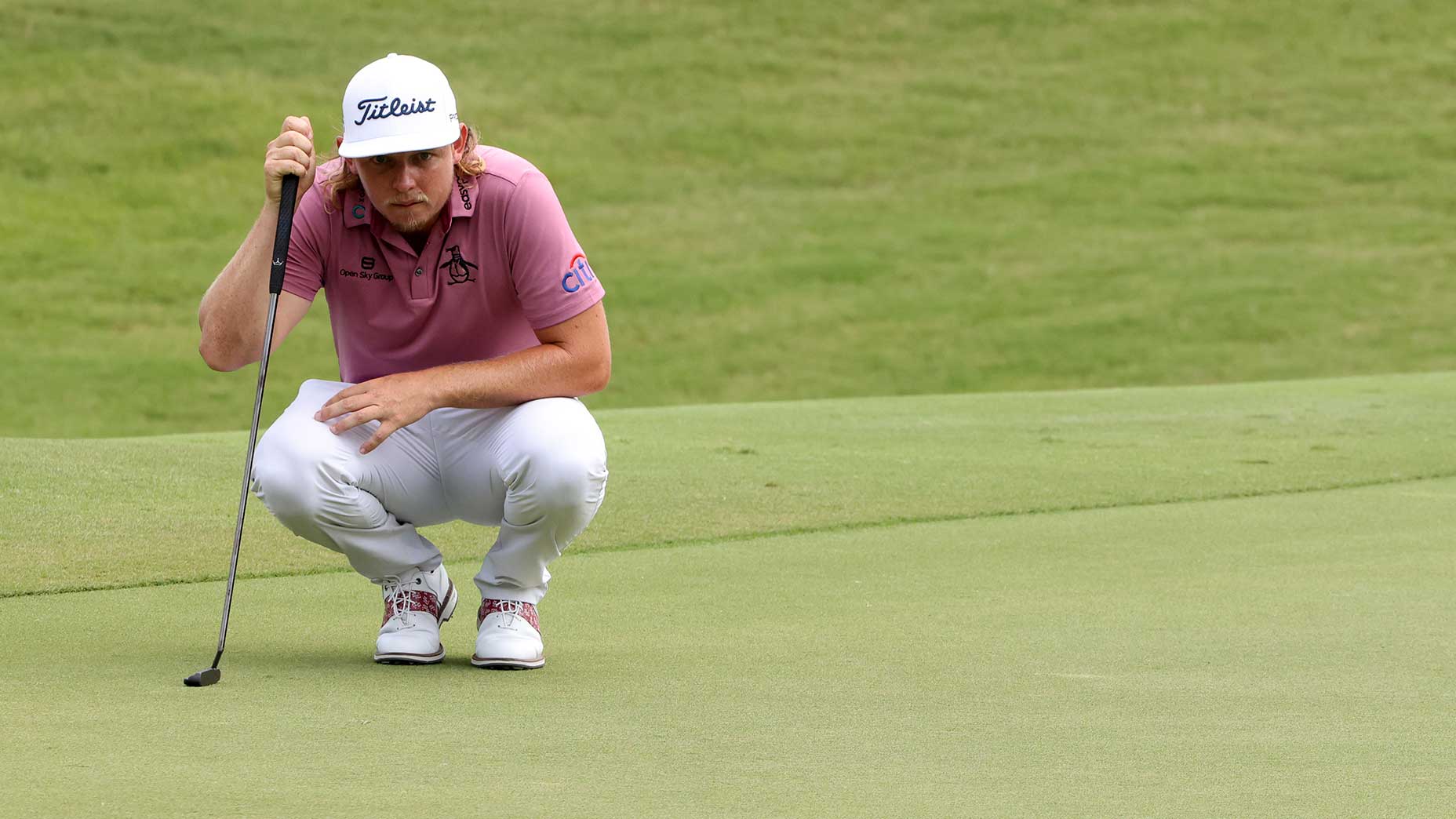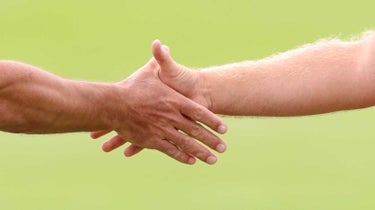
Is walking in someone’s line really all that bad? The Etiquetteist weighs in.
Getty Images
Like a lot of awkward moments in the digital age, last week’s Cam Smith-Scottie Scheffler ‘incident’ set the Twittersphere aflame.
Everyone seemed outraged, except the two protagonists.
The following facts are plain: during the opening round of the FedEx St. Jude Championship, Scheffler really did walk in front of Smith as the latter crouched to read a putt. And a soon-to-be viral photograph really did capture the Mulleted One glancing up at Scheffler with what looked like an expression of displeasure and surprise.
But later in the round, the two were seen high-fiving. And afterwards, both players insisted that there were no hard feelings and no harm done.
We know that Twitter is not real life. But we also know that world-class golfers are adept at spinning things, as much with their words as with their wedges.
So, what to make of it?
How egregious was Scheffler’s act of trespass? If you do something similar to your partner, is it really a big deal?
As with much of etiquette, the answer mostly comes down to optics. Most often, walking in someone’s line has little to no material effect on the putt they’re about to strike, unless the greens are spongy and impressionable, or you pause to tap dance or drag your feet. In Scheffler’s case, his strides had zero physical impact as he walked between Smith and Smith’s ball marker, not on the actual putting line, briefly obstructing the Aussie’s view.
You could argue that what he did was distracting.
But more than anything, it was disrespectful.
When you shake hands with your playing partners on the first tee, you’re making an unspoken agreement to abide a few basic rules, like not jangling coins in their backswing, not narrating every shot you strike, and not trampling on the ground where they’re about to roll a ball.
The idea that doing so might reduce their chances of draining a 10-footer is ridiculous. On the crowded public courses many of us play, every square foot of every green is getting trampled all the time. Where you walk isn’t going to make a difference in the trueness of a roll. What’s more, unlike the pros, most of us are so unskilled with the flat stick that any redirection of our putts is just as apt to help as it is to hurt.
But that’s also not the point.
If you walk in someone’s line, they’re not out of line to ask you not to (if that same partner asks you not to walk in their through-line, it’s a different story; at that point, they’re pretty much just being a wanker).
Is any of this a big deal? Not on the scorecard. But small gestures add up into a measure of our character. By all appearances, Scheffler is a class act, and we’ll take him at his word that his wayward move last week was nothing more than a brain cramp. But Smith had every right to look miffed in the photo because, well, he had been wronged.










